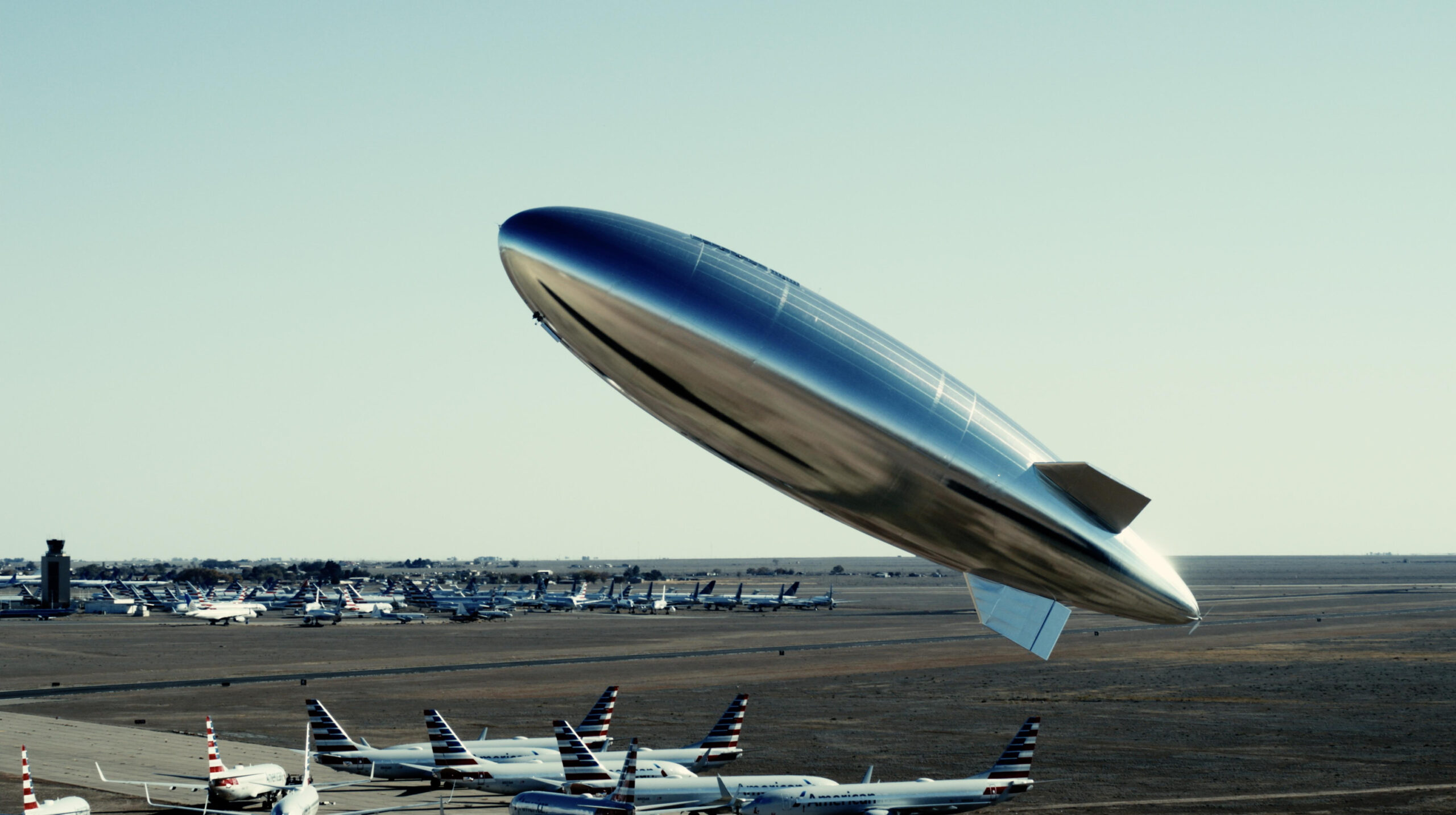Teruel is going to be the headquarters of the first stratoport in Spain and one of the first in the entire European Union.
The American company Sceye, dedicated to assembling and operating zeppelin-type stratospheric aircraft, announced this Friday that it will set up its European headquarters at Teruel airport.
The new facility will house the specialized engineering, production and flight operations necessary to provide commercial services in Mediterranean Europe, the Middle East and Africa.
Sceye’s aircraft will operate in the stratosphere at an altitude of 20 km and is designed to remain above the area of operation for several months at a time.
From this position, they can provide wireless broadband connectivity in areas without coverage, monitor air quality and greenhouse gas emissions, detect forest fires, image and telecommunications services, perform mapping and surveying services, traffic control maritime and illegal fishing, among other utilities.
Sceye’s proprietary helmet fabric is prepared to withstand the extreme environmental conditions of the stratosphere and optimize strength, helium retention and thermal management.
High-performance batteries and solar panels complete the energy loop: they provide enough energy storage to last until dawn, and highly efficient solar cells to generate power during the day.
Although it is a European company with headquarters in Switzerland, Sceye has its engineering, production and operations center in Roswell (New Mexico, USA).
From there it flew into the stratosphere on June 14, 2022, as part of six test flights scheduled for this year.
The president of the Government of Aragon, Javier Lambán, and the president of Sceye, Mikkel Vestergaard, announced this Friday the installation at the Teruel airport of the first stratoport in Spain, from which stratospheric ships will operate and be monitored, those that act at about 20 kilometers from Earth, in the stratosphere.
The planned initial investment is 35 million euros, the project will be financed by the Teruel Investment Fund, it will create 135 direct “highly qualified” jobs and about 540 indirect ones.
In addition to the aircraft control center, a space will also be created for their assembly and the integration of electronic equipment.
This will allow it to be present in Teruel “the entire cycle” of manufacturing and use of the same, as detailed by the director of Sceye in Spain, Alfredo Serrano.
In statements to the media, Lambán said that “Teruel is going to be the first stratoport in Spain and one of the first in Europe”.
It is expected that it could serve as a drag for new investments this year, and that, according to the Aragonese president, it will provide important support for the candidacy for the Spanish Space Agency to which Teruel aspires, with the unanimous support of Aragonese institutions and social entities with the motto “From Teruel, to heaven”.
Vestergaard explained that in 2019 he visited Teruel and that, since then, he has remained in contact with the Government of Aragon to develop this project.
He has indicated that it is a “very new industry”, which works at an altitude of between 18 and 20 kilometers, with drones and satellites.
Sceye has its first center in New Mexico, United States, and has decided that its second center, and a benchmark in Europe, is Teruel.
Lambán stated that “Mikkel Vestergaard’s decision transcends the importance of the employment it will generate, both directly and indirectly. The company’s decision means strengthening Teruel as an aeronautical and space ecosystem at a European level”.
Vestergaard has pointed out that it was the European Agency that indicated that Teruel could be an option due to its proximity to the sea and being an area with little wind for take-off events.
In addition, he has indicated that they were looking for a base in the Northern Hemisphere and below the 40-degree parallel. Likewise, he has highlighted the “very favorable political environment” and with the possibility of investing in this project.
At this time, the tender for the engineering project is being launched, until the assembly hall and the hangar are ready. For these complex infrastructures, the construction period is usually a year and a half.
Sceye is a materials science company founded in 2014 to explore the possibilities of the stratosphere.
The company has developed a new generation of stratospheric platforms to provide universal and equitable connectivity, improve climate change monitoring, natural resource management, wildfire detection, and better identify and contain natural disasters before they break out. of control.
Conforms to The Trust Project criteria
















